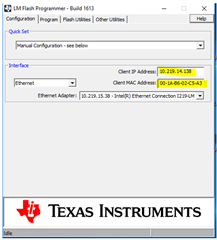主题中讨论的其他器件:EK-TM4C1294XL
大家好、
我正在使用 TM4C1294 EVK ,这里我正在 尝试通过以太网固件升级来刷写.hex 文件,我可以通过以太网将 hex 文件写入闪存,使用 TCP IP 与外部应用程序从笔记本电脑加载二进制文件
但以太网在打开时也会写入其他应用程序(铬)中的垃圾值,以及 hex 文件
您能建议如何解决此问题吗?
您是否还能帮助我们 使用 TM4C1294 EVK 的 TCP IP 数据包、与引导加载程序一起或不一起共享用于以太网固件升级的任何工作示例代码
请帮助我们完成以太网固件升级的示例项目和文档
请 尽快响应


